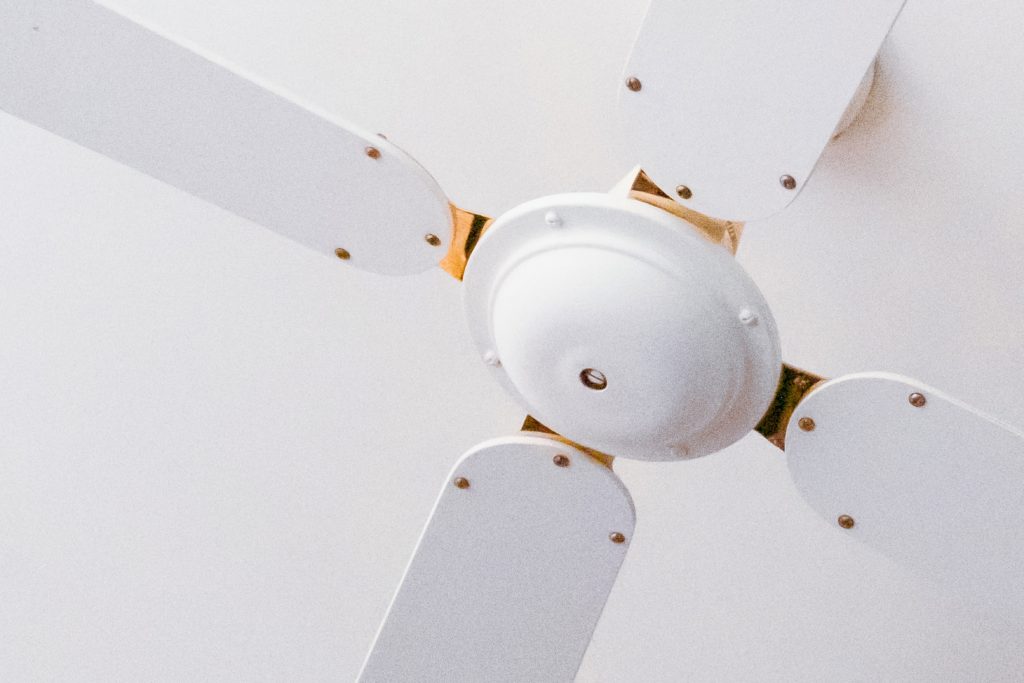It is a hot summer day, and you go to turn your ceiling fan on, but it is not working. What is wrong? It is frustrating when your ceiling fan will not turn on.
Sometimes this can be a simple solution, such as a problem with the light switch or the breaker box. Sometimes it is a more complicated problem that will require you to call an electrician or replace the fan entirely. There can also be a problem with the remote. Resetting both your fan and the remote can fix the issue.
There is no need to panic if you cannot turn your ceiling fan on. This quick guide will help you sort the problem out.
1. Try Resetting First
If your ceiling fan will not turn on, it is always best to try the simplest solutions first before you dive into anything more complicated.
To fix the issue in the quickest way possible, I recommend resetting your ceiling fan. The great thing is, anybody can follow these steps without the help of an electrician.
- Unplug the fan from the wall and wait for 60 seconds, then plug it back in and turn it on with its remote control.
If the fan can’t be physically unplugged, simply power it off in any other way possible instead.
If that alone didn’t work, I suggest you try resetting your ceiling fan remote as well.
- Turn the power off, hold down the power button on the remote until the light on it starts to flash. Then, press and hold it again for 30 seconds to resynchronize the remote with the ceiling fan.
Once you’ve done that, try powering up your ceiling fan and see if it turns on and responds to the commands.
I am pretty certain this should do the trick, but if not, I have a few more tips and tricks for you below.
2. Check The Light Switch
It is always best to try simple troubleshooting measures first, like resetting, but when those do not work, you have to try something more complicated.
If the fan is wired into the wall, make sure that the light switch is in the correct position. In some buildings, you will have to have the light switch in the “on” position before you can pull the cord to turn the fan on.
You should also make sure that the electricity is working properly in the room you are in. Depending on the situation, you might have to go check the fuse or breaker box and reset it if power is not properly working in the room.
Another possibility is that you might have to use a circuit tester to make sure that the switch is working. If the switch is not working, you might have to replace it.
3. Troubleshooting a Complex Motor Issue
To do this, you should make sure the fan is off and kill power to the fan to be safe.
If you are not comfortable working with electricity, you should call a professional electrician to troubleshoot the problem.
The first thing you should do is use a screwdriver to remove the cover on the ceiling fan. The first thing that you should look for is to see if there are any loose wires.
This is one of the most common problems with older ceiling fans.
The next thing you should do is use a circuit tester to make sure that the fan is receiving power. If it is not receiving power, then you know that there is a wiring issue that you need an electrician to repair.
Most likely, the wiring has gone between the fan itself and the switch or the power source.
If this is the case, you should inspect the wires. If you see any that are frayed, you can temporarily fix them with electrical tape.
This is only temporary, though, you will eventually need to replace any wires that are damaged.
4. Motor Shaft Troubleshooting
It is also important to inspect the fan’s motor shaft. You have to make sure there is no wiring that is keeping the fan from moving. This is something that can happen over time.
If you do happen to see any wiring blocking the fan, you should move the wiring before attempting to turn the fan on again.
At this point, the fan still might not be working. If this is the case, you will probably have to replace the motor entirely. This is especially common with older fans.
5. Replacing a Ceiling Fan Motor
Replacing a ceiling fan motor can be complicated, depending on what type of motor your fan has.
Some fans have motors that you can easily slide in and out to replace. Other fans are more complicated. With these, you have to match the correct wiring from the fan to the new motor.
When you remove the old motor, you should take careful note of the wiring so that you can easily replace it when you install the new motor.
6. Remote Control Problems
Sometimes, the problem is not with the fan itself, it is with the remote control that you use to turn the fan on. Modern fans often come with remote controls, and this can cause problems with turning the fan on.
The first step of course is to check the remote’s batteries.
If the batteries are fine, then you should turn the power to the fan off at the circuit breaker box. Then you should check the fan’s receiver and make sure the settings are the same as on your remote.
If replacing the batteries and checking the settings of the receiver do not work, then your remote control might be physically broken.
If this is the case, then you will most likely have to replace the remote control entirely.
Final Thoughts
There are lots of reasons why you might not be able to turn your ceiling fan on. Some of these problems are simple issues that you can quickly troubleshoot.
The issue might be as simple as your light switch being in the wrong position, or a problem in the breaker box.
Some problems are more complicated, though, and you might have to call an electrician to fix the problem.
Sometimes you will even have to replace the fan’s motor entirely. It can also end up being a problem with the remote control that you use to control the fan.

Hi there, technology lovers! My name is James, I am an admin and a frequent writer for this blog. I am a techno-geek, so this blog is the place where I want to share all my knowledge with you to make your life a little bit easier in terms of dealing with technology.



